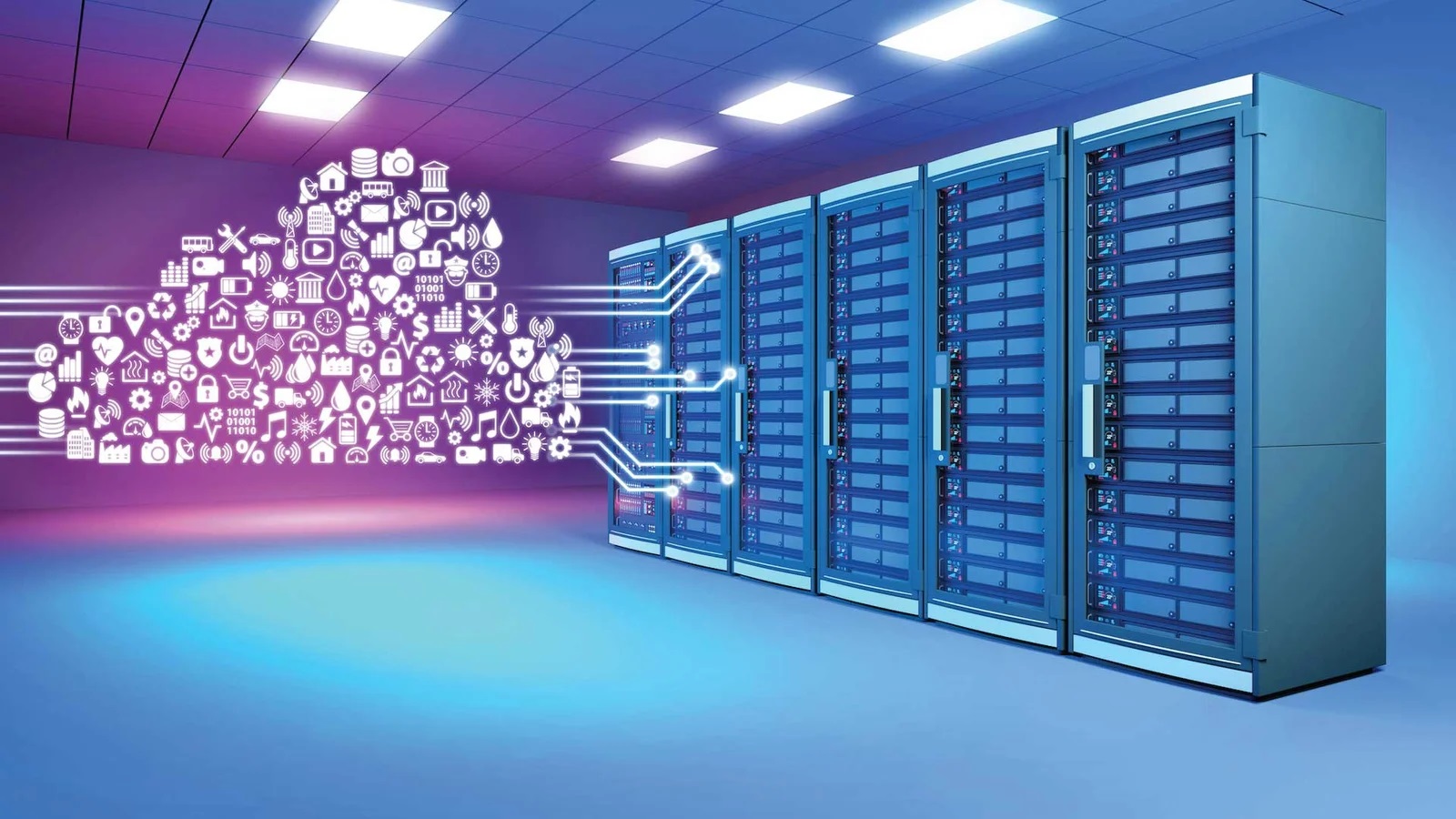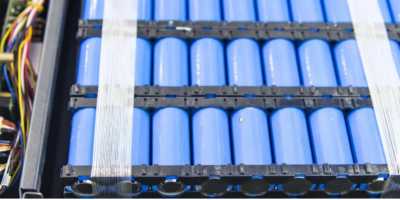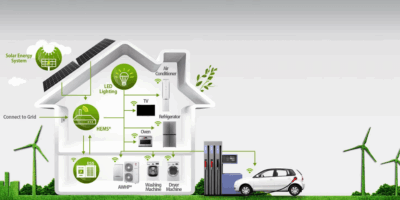The Generator In Data Center Market size is estimated at USD 7.22 billion in 2024, and is expected to reach USD 10.72 billion by 2033, growing at a CAGR of 4.85% during 2024-2033
Introduction: Generators are essential components of data center infrastructure, providing backup power to ensure uninterrupted operation of critical IT equipment and services. In the event of grid power outages or disruptions, generators kick in to maintain uptime, protect data integrity, and minimize business disruptions for data center operators and their customers.
Objective: This market overview aims to analyze the global generator market in the context of data centers, including market size, trends, drivers, challenges, and regional dynamics.
Market Overview: The generator market in data centers is driven by factors such as increasing demand for data storage and processing capacity, growing reliance on digital services, and the need for business continuity and disaster recovery solutions. Data center operators invest in generators as part of their overall infrastructure strategy to mitigate the risks associated with power outages and ensure high availability of services.
Market Drivers:
- Business Continuity: Data center operators prioritize business continuity and service availability to meet customer SLAs and contractual obligations, driving investments in backup power solutions like generators.
- Uptime Requirements: Downtime in data centers can result in significant financial losses, reputation damage, and legal liabilities for operators and their customers, highlighting the importance of reliable backup power systems.
- Digital Transformation: The proliferation of digital services, cloud computing, e-commerce, and IoT applications increases the demand for data center capacity and resilience, driving investments in generator infrastructure.
- Regulatory Compliance: Regulatory requirements and industry standards mandate data center operators to implement backup power solutions and disaster recovery plans to protect critical IT infrastructure and sensitive data.
Market Challenges:
- Environmental Impact: Traditional diesel generators used in data centers emit pollutants and greenhouse gases, raising environmental concerns and regulatory scrutiny, prompting operators to explore cleaner and more sustainable power alternatives.
- Cost Considerations: Generators and associated infrastructure represent significant capital and operational expenses for data center operators, requiring careful cost-benefit analysis and investment planning to achieve the desired level of resilience and cost-effectiveness.
- Scalability and Flexibility: Data center operators must balance the scalability and flexibility of backup power solutions with the need to meet evolving business requirements, technology advancements, and regulatory mandates.
- Energy Efficiency: The energy efficiency of generators and their impact on overall data center PUE (Power Usage Effectiveness) is a key consideration for operators seeking to minimize operational costs, reduce environmental footprint, and optimize resource utilization.
Overview of the Generator in Data Center Market
Introduction
Data centers are critical infrastructures that house vast amounts of computing resources, including servers, storage systems, and networking equipment. These facilities are essential for supporting the digital economy, providing the backbone for cloud computing, big data analytics, and numerous online services. Ensuring continuous power supply to data centers is crucial, as even a brief outage can result in significant data loss, operational disruption, and financial impact. Generators play a vital role in providing backup power to data centers, ensuring uninterrupted operations during power failures. This comprehensive overview covers the historical development, technological advancements, market segmentation, trends, drivers and challenges, competitive landscape, regional insights, and future outlook for the generator in data center market.
Historical Development
The need for reliable backup power in data centers became apparent as the reliance on digital technologies and online services grew. In the early days of computing, data centers were smaller and less critical, but as businesses and services moved online, the importance of these facilities increased. Initially, data centers relied on Uninterruptible Power Supply (UPS) systems and basic diesel generators to ensure power continuity.
In the 1990s and 2000s, the rapid expansion of the internet and the growth of cloud computing led to the proliferation of large-scale data centers. These facilities required more sophisticated and reliable backup power solutions. Diesel generators became standard, known for their reliability and ability to provide substantial power output. Over time, advancements in generator technology, fuel efficiency, and emissions control improved the performance and environmental impact of these backup systems.
Technological Advancements
- Fuel Efficiency and Emissions Reduction: Modern generators for data centers are designed to be more fuel-efficient and produce fewer emissions. Innovations in engine technology, such as advanced fuel injection systems and turbocharging, have significantly improved fuel efficiency. Additionally, the use of cleaner fuels like natural gas has further reduced emissions.
- Hybrid Power Solutions: The integration of renewable energy sources, such as solar and wind, with traditional generator systems has led to the development of hybrid power solutions. These systems can reduce reliance on fossil fuels and decrease operational costs.
- Remote Monitoring and Management: The integration of Internet of Things (IoT) technologies allows for real-time remote monitoring and management of generator systems. Data center operators can monitor generator status, fuel levels, and maintenance needs remotely, improving reliability and reducing downtime.
- Modular and Scalable Designs: Advances in engineering have led to the development of modular and scalable generator systems. These generators can be easily expanded or reconfigured to meet the changing power needs of data centers.
- Battery Storage Integration: Pairing generators with advanced battery storage systems ensures seamless power supply during the transition from the main grid to backup power. This integration enhances reliability and reduces the dependency on continuous generator operation.
Challenges
- High Initial Investment: The cost of purchasing and installing high-capacity generators can be significant. This initial investment can be a barrier for some data center operators, particularly smaller enterprises.
- Operational and Maintenance Costs: Generators require regular maintenance and fuel, adding to operational costs. Managing these costs and ensuring timely maintenance can be challenging, especially for large and distributed data center facilities.
- Environmental Concerns: Traditional diesel generators produce significant emissions, contributing to environmental pollution. There is increasing pressure on data centers to adopt more environmentally friendly solutions, which can involve higher costs and technological shifts.
- Fuel Supply and Logistics: Ensuring a reliable supply of fuel for generators, particularly during extended outages, can be logistically challenging. Any disruption in fuel supply can impact the operational readiness of data centers.
- Technological Integration: Integrating generators with modern data center infrastructure and remote monitoring systems requires technical expertise and can involve compatibility issues with existing equipment.
Market Trends
- Shift Towards Renewable and Hybrid Solutions: There is a growing trend towards the adoption of renewable and hybrid power solutions for data centers. These solutions not only reduce environmental impact but also offer potential cost savings in the long term.
- Edge Data Centers: The rise of edge computing is driving the development of smaller, localized data centers. These edge data centers require reliable backup power solutions, often necessitating compact and efficient generator systems.
- Focus on Energy Efficiency: Data centers are increasingly focused on improving energy efficiency to reduce operational costs and environmental impact. Energy-efficient generators that consume less fuel and produce fewer emissions are becoming more popular.
- Enhanced Battery Storage Solutions: Advances in battery technology are enabling more efficient energy storage solutions. Integrating generators with high-capacity batteries ensures seamless power supply transitions and reduces reliance on continuous generator operation.
- Smart Grid Integration: The integration of data centers with smart grid technologies allows for optimized power management. Smart grids facilitate better load management and energy efficiency, improving the overall reliability of power supply to data centers.
Competitive Landscape
The generator for data center market is competitive, with several key players offering a wide range of products and solutions. Major companies include:
- Caterpillar Inc.: Caterpillar is a leading provider of diesel and natural gas generators known for their reliability and durability. Their generators are widely used in data centers for backup power.
- Cummins Inc.: Cummins offers a comprehensive portfolio of generator solutions, including diesel, natural gas, and hybrid systems. Their products are known for high performance and efficiency, making them popular in the data center industry.
- Generac Power Systems: Generac specializes in backup power solutions, providing generators that cater to residential, commercial, and industrial applications. Their data center-specific generators are designed for high reliability and ease of maintenance.
- Kohler Co.: Kohler provides reliable and efficient generator solutions for data centers, including both diesel and natural gas options. Their products are designed to meet stringent regulatory requirements and ensure continuous operation.
- Himoinsa: Himoinsa, part of the Yanmar Group, offers a range of generator solutions tailored for data center applications. Their products are known for their robust design and ability to operate in harsh conditions.
Regional Insights
North America
The North American generator for data center market is driven by the region’s advanced data center infrastructure and high demand for reliable backup power solutions. The presence of major technology companies and data centers supports market growth. Additionally, the region’s focus on renewable energy and sustainability is driving the adoption of hybrid and renewable-based generators.
Europe
Europe is a significant market for generators in the data center sector, characterized by a strong emphasis on quality and sustainability. The region’s stringent environmental regulations and the push for renewable energy solutions influence market dynamics. The expansion of data centers and the deployment of edge computing facilities further drive the demand for reliable backup power solutions.
Asia-Pacific
The Asia-Pacific region is experiencing rapid growth in the data center sector, driven by increasing industrialization, urbanization, and digitalization. Countries like China, India, and Japan are investing heavily in expanding their data center infrastructure, creating significant opportunities for generator manufacturers. The region’s diverse energy landscape and focus on renewable solutions also influence market trends.
Rest of the World (RoW)
Markets in Latin America, the Middle East, and Africa are gradually adopting advanced data center infrastructure, driving the demand for reliable backup power solutions. Economic growth, urbanization, and the expansion of digital services in these regions present significant growth opportunities for generator manufacturers. The challenges of unreliable power grids and remote locations make generators essential for maintaining data center reliability.
𝐑𝐞𝐜𝐞𝐢𝐯𝐞 𝐭𝐡𝐞 𝐅𝐑𝐄𝐄 𝐒𝐚𝐦𝐩𝐥𝐞 𝐑𝐞𝐩𝐨𝐫𝐭 @ https://stringentdatalytics.com/sample-request/generator-in-data-center-market/14113/
Market Segmentations:
Global Generator in Data Center Market: By Company
Caterpillar
Generac
MTU Onsite Energy
SDMO
Atlas Copco
AVK
Wilson
Himoinsa
MTU Onsite Energy
Pramac
Global Generator in Data Center Market: By Type
Below 500 KW
501-1000 KW
1001-3000 KW
Above 3000 KW
Global Generator in Data Center Market: By Application
Analog Control Technology
Digital Control Technology
Others
𝐂𝐥𝐢𝐜𝐤 𝐭𝐨 𝐏𝐮𝐫𝐜𝐡𝐚𝐬𝐞 𝐌𝐚𝐫𝐤𝐞𝐭 𝐑𝐞𝐬𝐞𝐚𝐫𝐜𝐡 𝐑𝐞𝐩𝐨𝐫𝐭 @ https://stringentdatalytics.com/purchase/generator-in-data-center-market/14113/?license=single
Regional Analysis:
- North America: The data center generator market in North America is driven by the presence of major tech hubs, cloud service providers, and hyperscale data center operators. Regulatory requirements, extreme weather events, and grid reliability issues influence market dynamics in the region.
- Europe: European data center operators focus on energy efficiency, sustainability, and renewable energy integration, driving investments in generator technologies that minimize environmental impact and align with regulatory mandates for clean energy and carbon reduction.
- Asia-Pacific: The Asia-Pacific region experiences rapid growth in data center construction and expansion, driven by increasing digital adoption, cloud migration, and e-commerce growth. Data center operators in the region invest in backup power solutions, including generators, to ensure service availability and resilience.
- Middle East and Africa: The Middle East and Africa region see investments in data center infrastructure to support economic diversification, digital transformation, and smart city initiatives. Data center operators prioritize resilience and uptime, driving demand for backup power solutions like generators.
Conclusion: The generator market in data centers plays a critical role in ensuring business continuity, service availability, and disaster recovery for data center operators and their customers. Despite challenges related to environmental impact, cost considerations, and energy efficiency, the market continues to grow driven by increasing digitalization, regulatory compliance requirements, and the need for reliable IT infrastructure. Continued investments in technology innovation, renewable energy integration, and regulatory compliance will be key to unlocking the full potential of the data center generator market and meeting the evolving needs of the data-driven economy.
About Stringent Datalytics
Stringent Datalytics offers both custom and syndicated market research reports. Custom market research reports are tailored to a specific client’s needs and requirements. These reports provide unique insights into a particular industry or market segment and can help businesses make informed decisions about their strategies and operations.
Syndicated market research reports, on the other hand, are pre-existing reports that are available for purchase by multiple clients. These reports are often produced on a regular basis, such as annually or quarterly, and cover a broad range of industries and market segments. Syndicated reports provide clients with insights into industry trends, market sizes, and competitive landscapes. By offering both custom and syndicated reports, Stringent Datalytics can provide clients with a range of market research solutions that can be customized to their specific needs.
Reach US
Stringent Datalytics
+1 346 666 6655
Social Channels:
Linkedin | Facebook | Twitter | YouTube




Leave a Reply